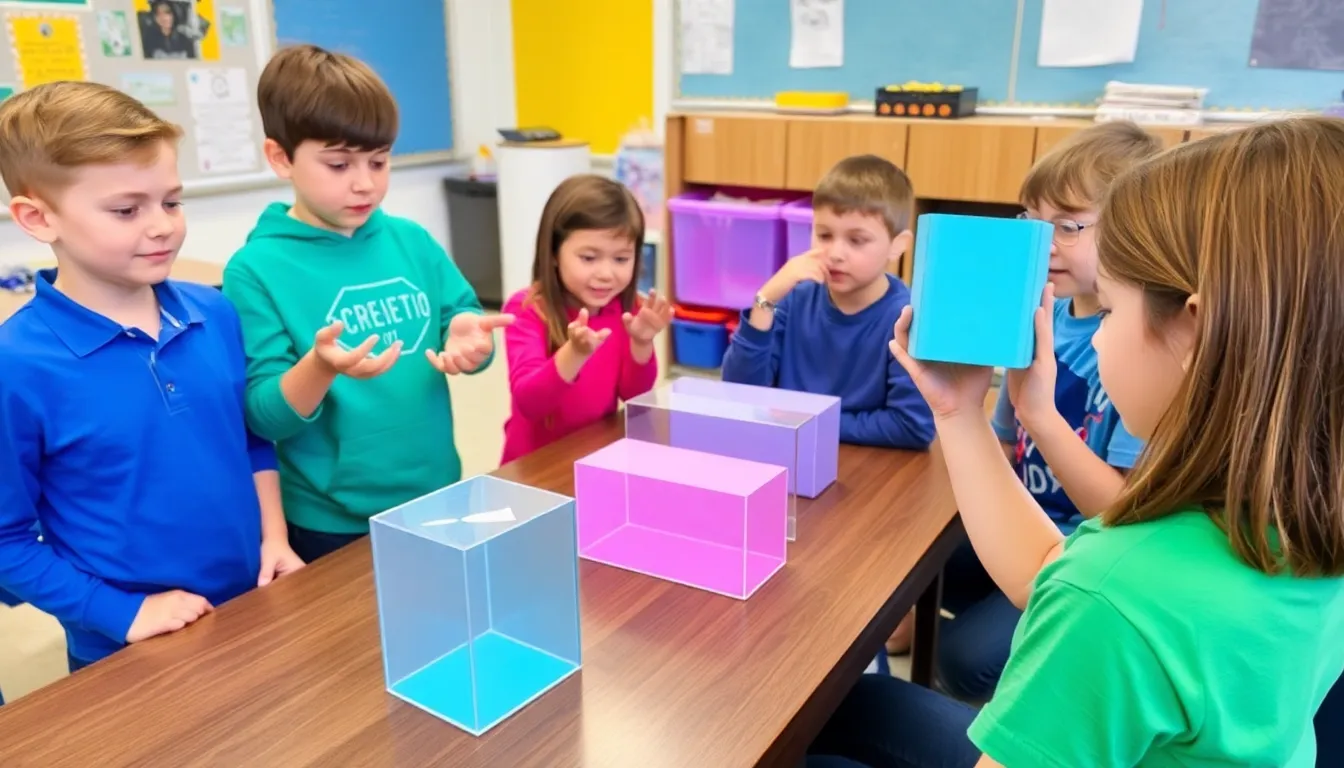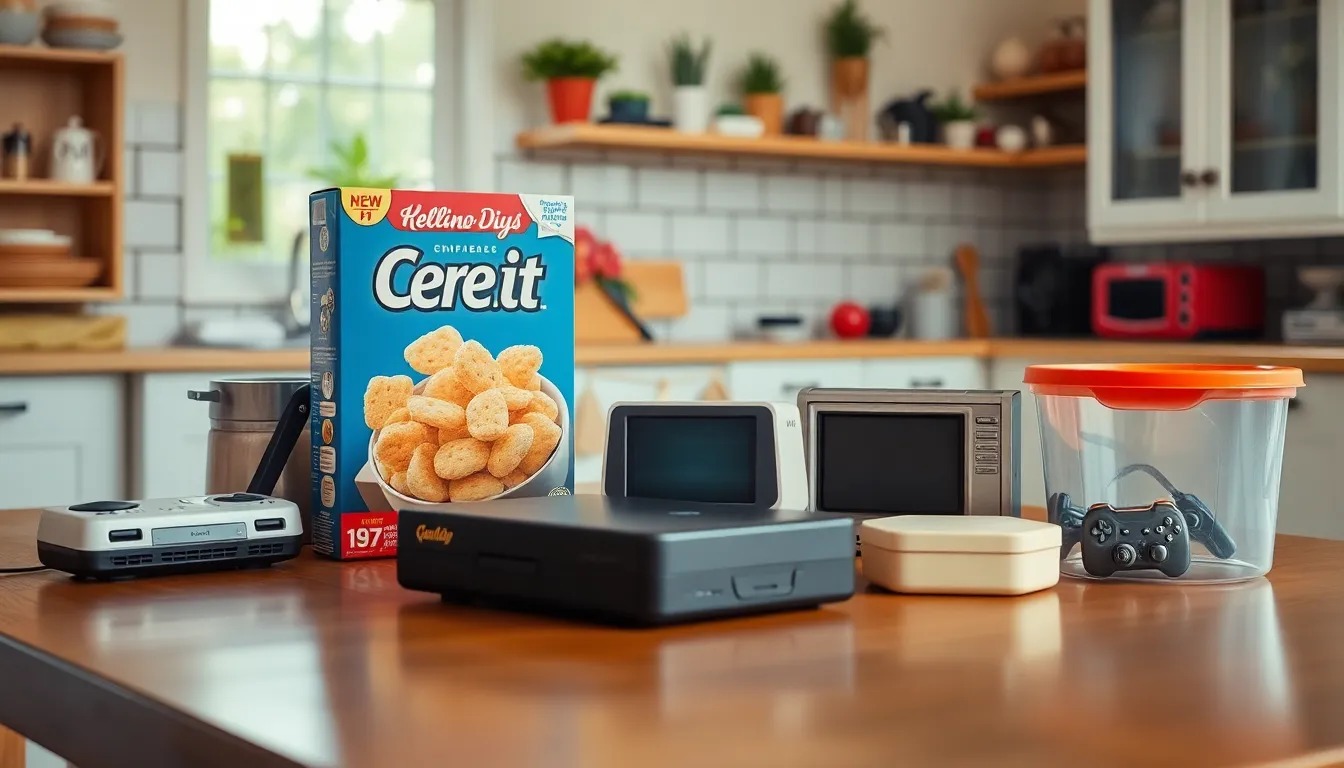When it comes to shapes, the rectangular prism is the unsung hero of the geometry world. Think of it as the dependable sidekick to the more glamorous shapes like spheres and pyramids. It’s got that classic boxy look that’s both simple and versatile. You’ve probably seen it everywhere—from cereal boxes to your favorite video game consoles.
Table of Contents
ToggleUnderstanding Rectangular Prisms
Rectangular prisms represent fundamental shapes in geometry, frequently found in various real-world items. They consist of six rectangular faces, twelve edges, and eight vertices.
Definition of a Rectangular Prism
A rectangular prism is a three-dimensional shape with opposite faces that are equal rectangles. It forms as a result of stretching a rectangle along a third dimension. This geometric figure encompasses distinct dimensions, namely length, width, and height, which provide it with its box-like structure.
Characteristics of Rectangular Prisms
Rectangular prisms exhibit several key characteristics. Each face meets at right angles, ensuring all corners are sharp and precisely defined. The volume of a rectangular prism calculates as length multiplied by width multiplied by height. Surface area, another important aspect, sums the areas of all six faces. Various objects, including bricks and storage boxes, exemplify the practical uses of rectangular prisms, highlighting their utility in daily life.
Visual Representation of Rectangular Prisms

Rectangular prisms can be visualized through various representations that enhance understanding. These representations clarify their geometric properties and practical applications.
2D Representations
2D representations of rectangular prisms include drawings and diagrams. Common depictions show the shape as a rectangle with labeled dimensions: length, width, and height. Illustrators often use perspective to convey depth, helping viewers grasp the three-dimensional qualities of the shape. Graphical models frequently highlight vertices and edges, making structural features easier to identify. Such visuals assist in teaching geometry concepts, demonstrating spatial relationships effectively.
3D Models
3D models provide a tangible understanding of rectangular prisms. Physical models often use materials like cardboard or plastic to create accurate representations. Educators utilize these models during lessons to show real-world applications. Digital simulations in educational software allow users to manipulate the shape, enhancing interaction and learning. Students benefit from observing how volume and surface area calculations apply to these models, reinforcing geometric principles through hands-on experience.
Real-World Examples of Rectangular Prisms
Rectangular prisms appear frequently in daily life, found in a variety of forms and functions.
Common Objects That Are Rectangular Prisms
Cereal boxes exemplify how this shape manifests in everyday items. Many calculators also feature rectangular prism designs, allowing for compact storage. Packaging for electronics, such as video game consoles, utilizes the geometry for efficient transportation. Additionally, storage containers showcase the practicality of rectangular prisms, maximizing volume for organizing items. Bookshelves and many books themselves reflect the rectangular prism form, providing both aesthetic and functional value.
Architectural Uses
Structures often adopt the rectangular prism shape due to its stability. Buildings utilize this form for both residential and commercial spaces, ensuring efficient use of materials and space. Shipping containers also adopt the rectangular prism design, facilitating transport across various modes of freight. In urban settings, parking garages frequently display this geometry, maximizing available land while allowing for optimal vehicle placement. Finally, many bridges feature rectangular prism elements in their support structures, contributing to overall safety and durability.
Comparison With Other Shapes
Rectangular prisms often compare differently to other geometric forms. Understanding these relationships enhances grasp of their properties.
Rectangular Prism vs. Cube
Rectangular prisms differ from cubes primarily in dimensions. A cube, being a specialized rectangular prism, has equal length, width, and height. Each face on a cube remains a square, while a rectangular prism has rectangular faces that may vary in size. Both shapes possess the same number of edges, vertices, and faces, totaling twelve edges, eight vertices, and six faces. Distinctly, the surface area and volume formulas apply similarly, but a rectangular prism offers more flexibility in shape and size, making it practical in a variety of contexts.
Rectangular Prism vs. Other Polyhedra
Rectangular prisms interact interestingly with other polyhedra. Polyhedra encompass various forms like tetrahedra, octahedra, and dodecahedra, contributing to the rich diversity of geometric shapes. Unlike these, rectangular prisms contain flat surfaces and straight edges. Tetrahedra possess triangular faces, while octahedra consist of eight triangular faces, emphasizing their different structures. Rectangular prisms remain prevalent in daily life due to their utility, whereas other polyhedra find niche applications. Despite these differences, all shapes share relationships in geometry, enhancing spatial understanding and design principles.
The rectangular prism stands out as a fundamental shape in both geometry and everyday life. Its simple yet effective design can be seen in countless items around us. From packaging to architecture this shape plays a vital role in maximizing space and functionality.
Understanding its properties and visual representations enhances comprehension of geometric concepts. Whether through 2D drawings or 3D models the rectangular prism serves as an essential tool for learning. Its versatility and practicality ensure its importance in various applications.
Recognizing the significance of the rectangular prism not only deepens appreciation for geometry but also highlights its impact on daily living. This shape may be simple but its contributions are anything but ordinary.





